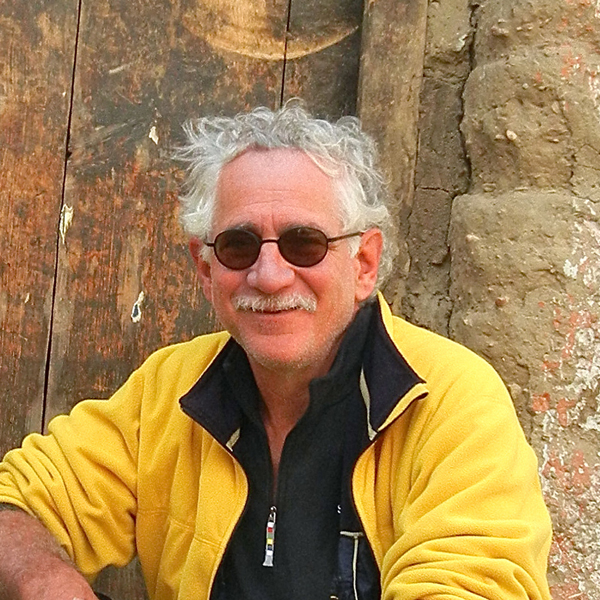Columns
What Kathmandu can be in 2049
This ambitious scenario is premised upon a youthful political leadership coming of age in future national and local elections.
Keith Leslie
After seeing a black and white photo of Kathmandu from 1949 circulating on social media, 30 years before I first came here, a friend asked for my optimistic image of Kathmandu 2049, 30 years from now. This ambitious scenario is premised upon a youthful political leadership coming of age in future national and local elections. This Kathmandu of the future would be environmentally conscious by ensuring greener public transportation (electric buses, light rails and urban gondolas). There would only be electric private vehicles on the streets, as well as separate commuter bicycle and walking paths along the banks of small rivulets throughout the Valley. There would be scores more community parks, as well as wider sidewalks and pedestrian-only streets through the densest parts of old Kathmandu. There would be flowering trees and bamboo everywhere along the roads and walkways, like the beautiful jacaranda trees planted on Durbar Marg 20 years ago.
Professional Nepali expats will have returned from the US, Australia and Europe (some eagerly, some due to immigration restrictions) bringing fresh investment, energies and ideas. Innovative 21st century careers in information technology, healthcare, service industries, online publishing, film editing, multi-media graphics and online marketing will have rapidly increased local employment leading to an economic renaissance. Young Nepalis with foreign parents will be able to become citizens, if they choose. A thriving international expatriate community with long-term residents and retirement visas will bring their skills, affection and creativity to Kathmandu.
Spacious Tundikhel
An efficient and effective individual tax system will have been successfully implemented, including fair wealth and inheritance taxes. The heart of Kathmandu, Tundikhel, once again will be spacious, cleared of its buildings, to become an impressive, well maintained city park; while the Narayanhiti Palace grounds will be a world-acclaimed Himalayan botanical garden, featuring open-air restaurants, bookstores and coffee shops across the street from stylish four-quadrant gates and a handsome, see-through cast-iron fence along the perimeter.
Kathmandu will have world-class music, theatre and film venues with recognised and emerging artists from around the globe regularly performing here. The ancient temples, bahals, palaces and dharamshalas will have been carefully restored, respected and protected. Religious temple life will be vibrant among the local Hindu and Buddhist communities. New temples, stupas and sacred gardens will have been built along the ridges of the Valley connected by walking trails, as we find on the ridges of Kyoto today.
Well-managed national and provincial parks will surround the Kathmandu Valley conserving the watershed, restoring biodiversity, protecting wildlife habitats and ensuring urban harmony with nearby nature. The Valley's rivers and streams will be clean and flow from their sources through their natural drainage. Plastic and garbage will no longer litter the city's waterways or walkways. The skies will be clear so that the magnificent Himalayan peaks will be visible from the Valley, as they used to be decades before.
The congestion of overhead wires will have long since been buried. Numerous Kathmandu walls will have imaginative mural paintings. Modern architecture will have a distinctly Himalayan and traditional Nepali style with high-rise buildings kept, as much as possible, lower than 10 stories. Nepali hospitals and medical staff will be world-class. Nurses will be highly trained, specialised and well paid. Most Nepali medical school graduates will stay in Nepal, or return after their residencies, than expatriate to other wealthier, distant countries. Thousands of South Asians will come to Kathmandu for medical treatment, not the other way around.
Government schools and universities will have been revitalised through the hiring of qualified and well-paid teachers. There will be expanded linkages with prominent, highly-rated Asian colleges and technical institutions. Nepali universities will be ranked among the top 100 in Asia. All children who start primary school will complete their Secondary Education Examination or International Baccalaureate. There will be free childcare centres in every ward, including pre-schools run by professional early childhood educators. Education disparities among caste and ethnic communities will be a thing of the past.
Less crowded capital
Nepal will host its own professional sports leagues in football, basketball and cricket for women and men (like the recent Nepal Basketball League tournament) with widespread social media followings, and including new state-of-the-art stadiums that offer young people opportunities to become full-time professional athletes—competitive internationally—in their chosen fields.
To ensure that Kathmandu is less overwhelmed, all seven provincial capital cities will have expanded authority and responsibility to become well-planned cities of 500,000 to 1 million people each, thereby reducing the population density in the Kathmandu Valley. Greed and jealousy will be banished while city dwellers on their morning walks will bow a gentle 'namaskar' to the flocks of trans-Asian migrating birds over the city's clear skies as contented families stroll the shaded walkways of a true Nepali Nirvana.
***
What do you think?
Dear reader, we’d like to hear from you. We regularly publish letters to the editor on contemporary issues or direct responses to something the Post has recently published. Please send your letters to [email protected] with "Letter to the Editor" in the subject line. Please include your name, location, and a contact address so one of our editors can reach out to you.




 16.12°C Kathmandu
16.12°C Kathmandu















